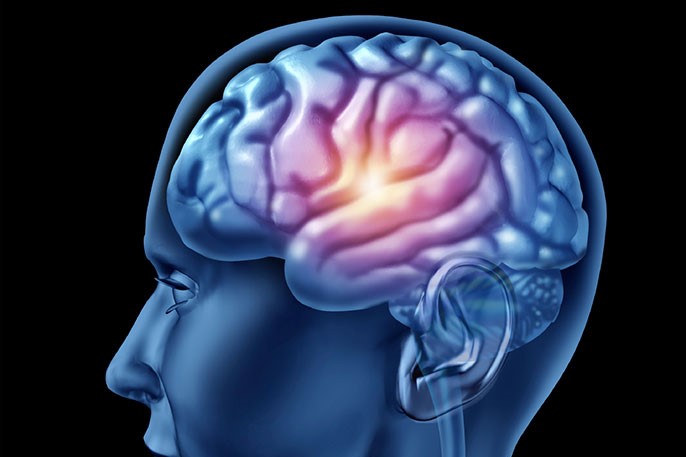
Subdural hematoma: what it is, what symptoms it has, and how to treat it
What is a subdural hematoma? The meninges are a special type of connective membrane that lines the central nervous system and has the main function of protecting the encephalon in the skull and the spinal cord in the spinal canal
The meninges consist of three concentric laminae called, from outside to inside:
- dura mater (or dura meninges, the lamina attached to the brain);
- arachnoid;
- pia mater (or pia meninges).
If a hemorrhage occurs between the arachnoid and pia mater, it is called a subarachnoid hemorrhage, while if blood collection occurs between the dura mater and the arachnoid, it is called a subdural hematoma.
Formed by venous blood, the hematoma can potentially compress structures of the cerebral ventricle system, blocking CSF outflow and resulting in obstructive hydrocephalus;
Types of subdural hematoma
Subdural hematoma can be acute or chronic:
- acute: hemorrhage occurs suddenly and profusely, typically due to traumatic rupture of a blood vessel;
- chronic: hemorrhage occurs slowly and progressively over time, typically in the elderly or patients with blood vessel wall disease.
The damage, in the case of subdural hemorrhage, is twofold:
- damage determined by the direct cause of the hematoma: for example, if the hematoma is determined by hemorrhage, the damage occurs in the area of the brain supplied by the injured vessel, which no longer receives oxygen and nourishment;
- damage caused by the hematoma itself: the accumulation of blood in the skull, results in increased intracranial pressure, which further worsens the clinical picture.
Subdural hematoma: what diseases is it characteristic of?
Acute subdural hematoma is usually caused by direct or indirect trauma to the head, typically occurring in automobile and sports accidents, falls from great heights, and acts of violent aggression (traumatic subdural hematoma).
A sudden, sharp blow to the head-as well as a well-delivered fist-is capable of injuring one or more cerebral vessels as cerebral displacement occurs within the skull, with laceration of bridging veins between the cerebral surface and adjacent dural venous sinuses: this results in a buildup of blood in the subdural area.
People who are elderly, have a coagulation disorder, and are on anticoagulants are more likely to develop a subdural hematoma: whereas in a young, healthy person, a major trauma is generally necessary to cause a subdural hematoma, in an elderly person with coagulopathy or on anticoagulants, even minor trauma is sufficient.
In a chronic subdural hematoma, small veins on the outer surface of the brain may tear due to mild and/or repeated trauma underestimated by the patient, causing mild but progressive bleeding into the subdural space.
Neurological symptoms may be evident after several days or weeks.
The elderly are at greater risk for chronic subdural hematoma because the shrinkage of the brain causes the blood vessels to become more elongated and thus vulnerable to tearing.
Risk Categories
Those most at risk of developing a subdural hematoma include:
- infants: their encephalic blood vessels are fragile and even simple shocks can result in their rupture
- elderly: as already mentioned, they are an at-risk category. This is because senescence causes physiological brain atrophy, which weakens the blood vessels and exposes them to a greater risk of rupture;
- alcoholics: alcohol causes pathological cerebral atrophy, which-as just seen-weakens the vessels;
- patients at high thrombotic risk who take anticoagulant drugs, such as warfarin or aspirin: these substances thin the blood and make it more difficult to clot when the blood vessel is injured.
Severity of a subdural hematoma
The severity and chances of recovery of a brain hemorrhage depend on a variety of factors, including:
- amount of blood accumulated;
- speed with which the hemorrhage occurred;
- the patient’s general state of health;
- the possible intake of anticoagulant drugs;
- the possible presence of hypertension, diabetes and coagulopathies;
- the timeliness of diagnosis and treatment.
Symptoms of subdural hematoma
Symptoms of subdural hematoma depend mainly on the amount of bleeding of the hemorrhage and the rate at which it has established.
In injuries to the with severe acute hemorrhage, a person may lose consciousness rapidly and go into a coma immediately, even before reaching the emergency room.
Read Also:
Emergency Live Even More…Live: Download The New Free App Of Your Newspaper For IOS And Android
Blood Pressure: New Scientific Statement For The Evaluation In People
Will Lower Blood Pressure Reduce The Risk Of Heart And Kidney Diseases Or Stroke?
Rapid Blood-Pressure Lowering In Patients With Acute Intracerebral Hemorrhage
Brain Hemorrhage: Causes, Symptoms, Treatments


